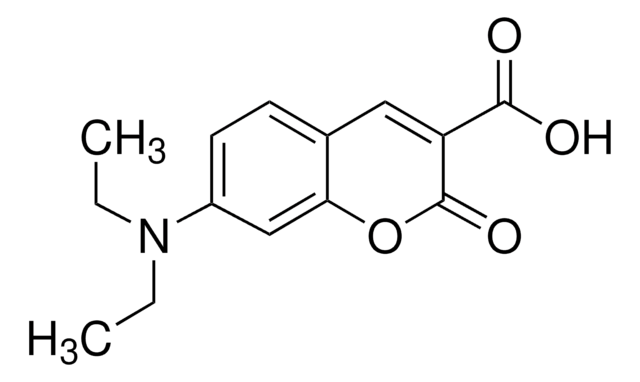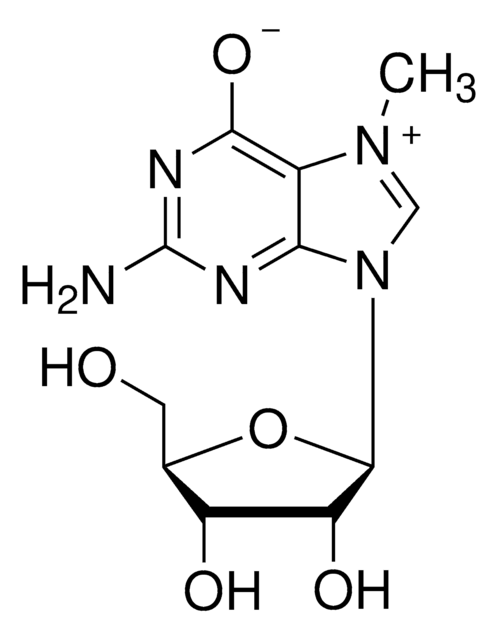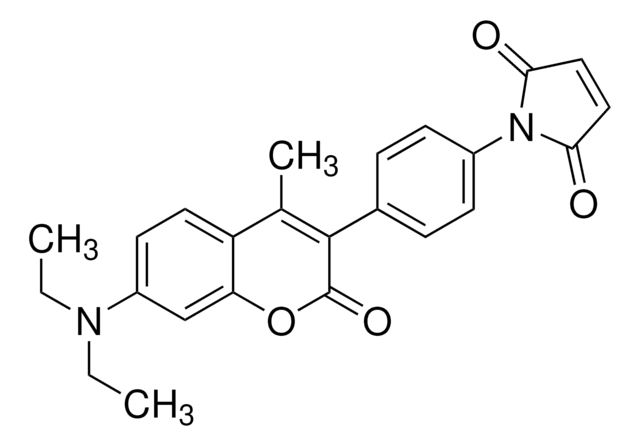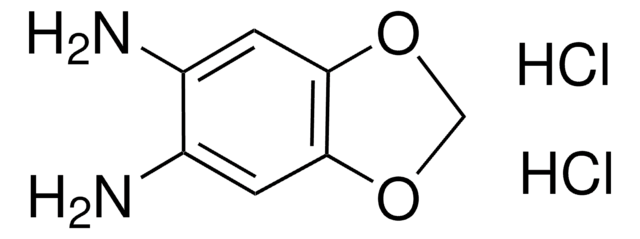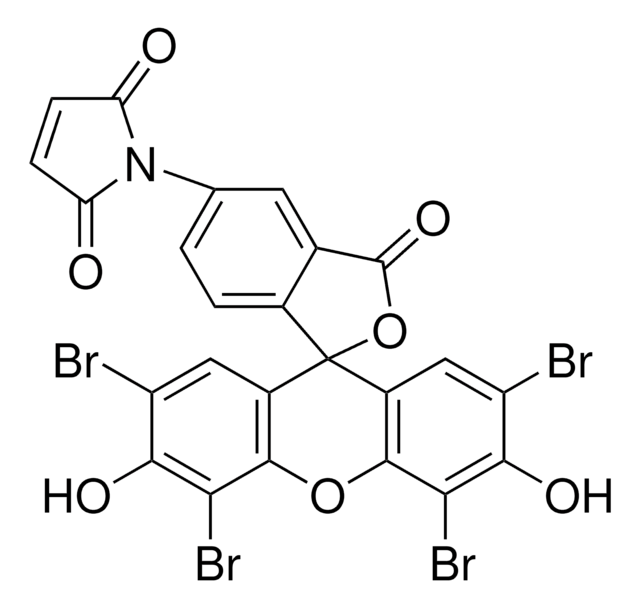05019
7-Diethylamino-3-[N-(2-maleimidoethyl)carbamoyl]coumarin
suitable for fluorescence, BioReagent, ≥97.0% (HPLC)
Sinonimo/i:
MDCC
About This Item
Prodotti consigliati
Nome Commerciale
BioReagent
Saggio
≥97.0% (HPLC)
Compatibilità
suitable for fluorescence
Stringa SMILE
CCN(CC)c1ccc2C=C(C(=O)NCCN3C(=O)C=CC3=O)C(=O)Oc2c1
InChI
1S/C20H21N3O5/c1-3-22(4-2)14-6-5-13-11-15(20(27)28-16(13)12-14)19(26)21-9-10-23-17(24)7-8-18(23)25/h5-8,11-12H,3-4,9-10H2,1-2H3,(H,21,26)
IXQPRUQVJIJUEB-UHFFFAOYSA-N
Applicazioni
Avvertenze
Warning
Indicazioni di pericolo
Classi di pericolo
Acute Tox. 4 Oral
Codice della classe di stoccaggio
11 - Combustible Solids
Classe di pericolosità dell'acqua (WGK)
WGK 3
Punto d’infiammabilità (°F)
Not applicable
Punto d’infiammabilità (°C)
Not applicable
Dispositivi di protezione individuale
dust mask type N95 (US), Eyeshields, Gloves
Certificati d'analisi (COA)
Cerca il Certificati d'analisi (COA) digitando il numero di lotto/batch corrispondente. I numeri di lotto o di batch sono stampati sull'etichetta dei prodotti dopo la parola ‘Lotto’ o ‘Batch’.
Possiedi già questo prodotto?
I documenti relativi ai prodotti acquistati recentemente sono disponibili nell’Archivio dei documenti.
I clienti hanno visto anche
Il team dei nostri ricercatori vanta grande esperienza in tutte le aree della ricerca quali Life Science, scienza dei materiali, sintesi chimica, cromatografia, discipline analitiche, ecc..
Contatta l'Assistenza Tecnica.